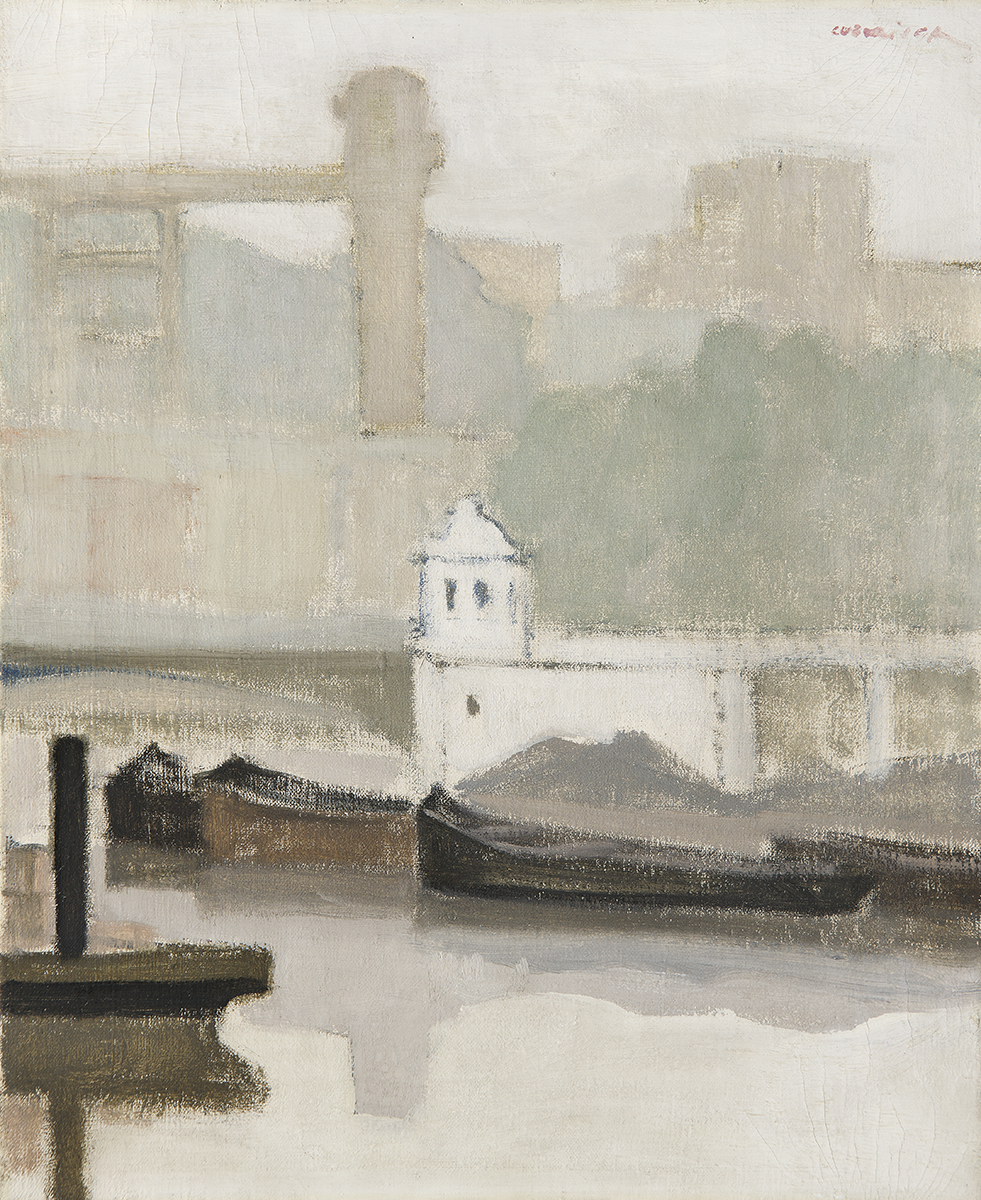Juan Ramón Luzuriaga
(Bilbao, 1938)
Estuary of Bilbao
1973
oil on canvas
42.4 x 34.2 cm
Inv. no. P01478
Luzuriaga was one of the most outstanding Basque landscape painters in Spain’s post-war period. Throughout his career, he focused on seascapes, and in particular scenes of Bilbao’s estuary, a seemingly inexhaustible iconographic source for him. In fact, the artist internalised the subject matter to such an extent that he sometimes painted it from memory, recreating it time and again to the point that it became an archetype in his work. It is worth pointing out the instrumental role the estuary played in the origins of modernity in the Basque Country, closely connected to the region’s industrial development since the early 1900s. In consequence, it was regarded as the symbol of Bilbao’s prosperity and a highly attractive subject matter for artists of the time.
That is the case of this painting, depicting an urban view of the estuary. In the background, among the buildings, we see the Begoña elevator, rendered with a sketchy, hazy treatment that lends the painting a sense of perspective. The choice of this view could respond to Luzuriaga’s eagerness to depict manmade constructions seamlessly integrated into and humanising the natural environment. Worth mentioning is how delicately and elegantly the artist has immortalised this location, overlooking its industrial condition. Far from showing the place with its usual hustle and and aggressiveness, he imbues it with a lyrical and suggestive atmosphere that conveys peace and tranquillity, creating a silent painting reminiscent in ways of Oriental art in this unusual image of the estuary.
Stylistically speaking, the work contains the main features of Luzuriaga’s practice prior to the 1980s, where the influence of the of Vázquez Díaz (1882-1969) is visible, mostly through the formal refinement and the constructive approach. He maintains the structure of the elements, shaped through areas of colour executed with a free albeit painstaking technique. The soft contrasts, the fuzzy glazes and the planes of graded tones give the composition a sense of depth. Equally notable is the lightness of the scene, imbued with a pleasant atmosphere created by a gentle study of light and a subtle treatment of colour, mostly greys, greens and mauves, that produce an overall vibrant whole.









